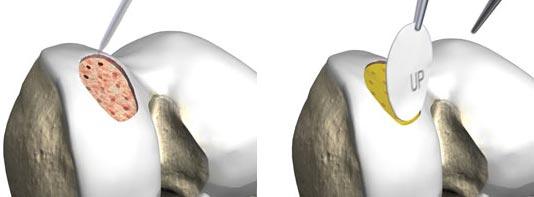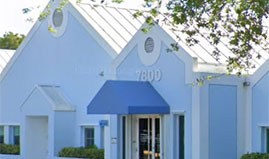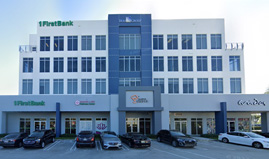Cartilage Regeneration (ACI/MACI)
Autologous Chondrocyte Implantation (ACI)
ACI is a two-step procedure. New cartilage cells are grown and then implanted in the cartilage defect.
First, healthy cartilage tissue is removed from a non-weightbearing area of the bone. This step is done as an arthroscopic procedure. The tissue which contains healthy cartilage cells, or chondrocytes, is then sent to the laboratory. The cells are cultured and increase in number over a 3- to 5-week period.
An open surgical procedure, or arthrotomy, is then done to implant the newly grown cells. The cartilage defect is prepared. A layer of bone-lining tissue, called periosteum, is sewn over the area. This cover is sealed with fibrin glue. The newly grown cells are then injected into the defect under the periosteal cover.
ACI is most useful for younger patients who have single defects larger than 2 cm in diameter. ACI has the advantage of using the patient's own cells, so there is no danger of a patient rejecting the tissue. It does have the disadvantage of being a two-stage procedure that requires an open incision. It also takes several weeks to complete. ACI is being phased out and replaced with the MACI technique (see below).
Matrix-Induced Chondrocyte Implantation (MACI)
MACI is a two-step procedure. New cartilage cells are grown and then implanted in the cartilage defect.
First, healthy cartilage tissue is removed from a non-weightbearing area of the bone. This step is done as an arthroscopic procedure. The tissue which contains healthy cartilage cells, or chondrocytes, is then sent to the laboratory. The cells are cultured and increase in number over a 3- to 5-week period. The cells are placed onto a membrane in the laboratory.
An open surgical procedure, or arthrotomy, is then done to implant the newly grown cells. The cartilage defect is prepared. The membrane with cartilage cells is then placed into the defect and glued in place and sealed with fibrin glue. In some applications, the procedure may be performed using arthroscopic techniques.
MACI is most useful for younger patients who have single defects larger than 2 cm in diameter. MACI has the advantage of using the patient's own cells, so there is no danger of a patient rejecting the tissue. It does have the disadvantage of being a two-stage procedure that may require an open incision. It also takes several weeks to complete from harvest to completion. It is also limited to use in knees and ankles by most insurance companies.
Doctor Hommen performs this technique.

MACI technique. The articular cartilage defect of the knee is cleaned and prepared (left). A thin membrane loaded with the patient’s own chondrocytes is implanted into the prepared defect and glued in place (right).













